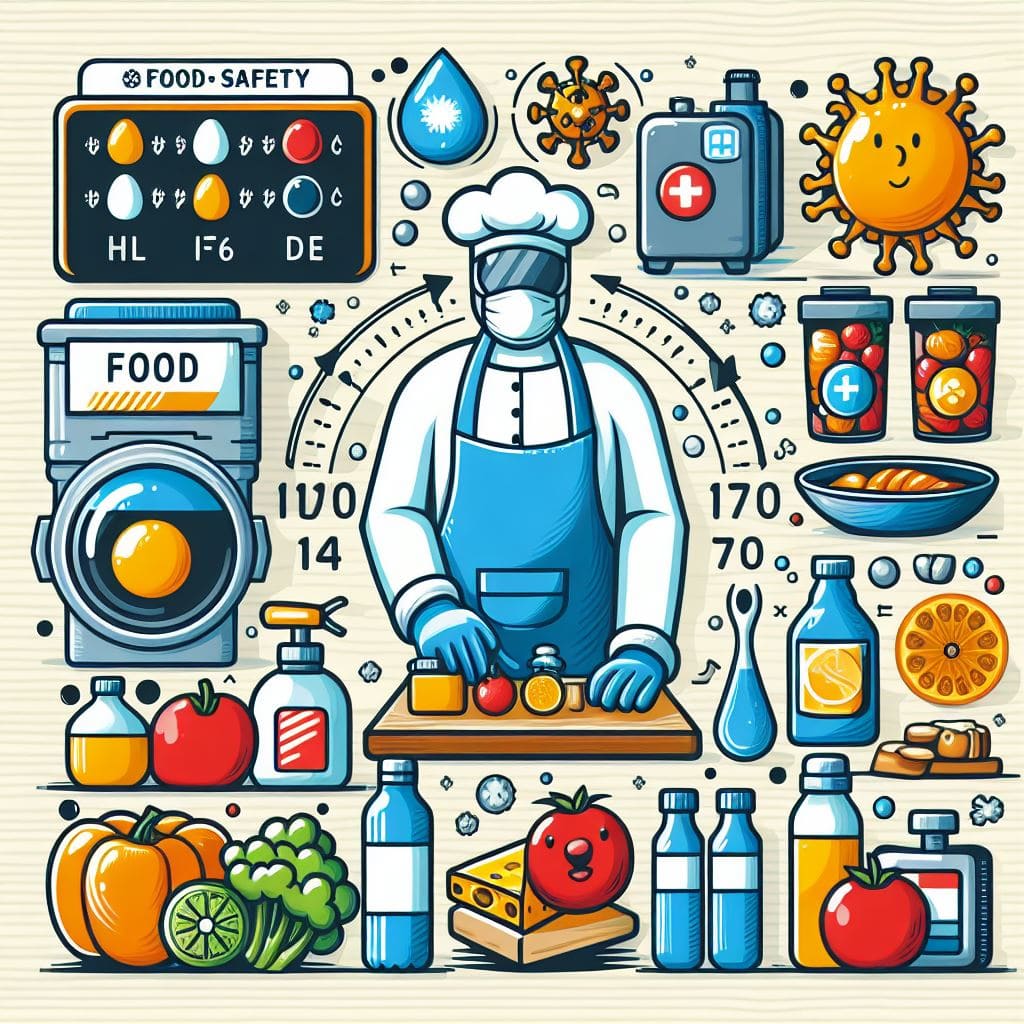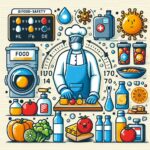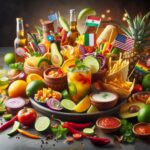Food safety and hygiene require proper storage, thorough washing, and precise cooking temperatures. Ensuring these practices prevents foodborne illnesses and enhances food quality.
Maintaining food safety and hygiene is crucial in promoting health and preventing diseases associated with improper food handling. Safe storage involves keeping perishable items refrigerated or frozen to deter bacterial growth, with temperatures for refrigerators typically below 40°F (4°C) and freezers at 0°F (-18°C).
Washing fruits, vegetables, and hands reduces the risk of cross-contamination, while using clean utensils and surfaces during food preparation is integral for hygiene. Cooking foods to their recommended temperatures, verified with a food thermometer, is essential to kill potentially harmful bacteria. A comprehensive understanding of these practices helps households and food establishments protect consumers and ensure compliance with health regulations. Prioritizing these food safety measures is a fundamental aspect of kitchen protocol, contributing to overall well-being.
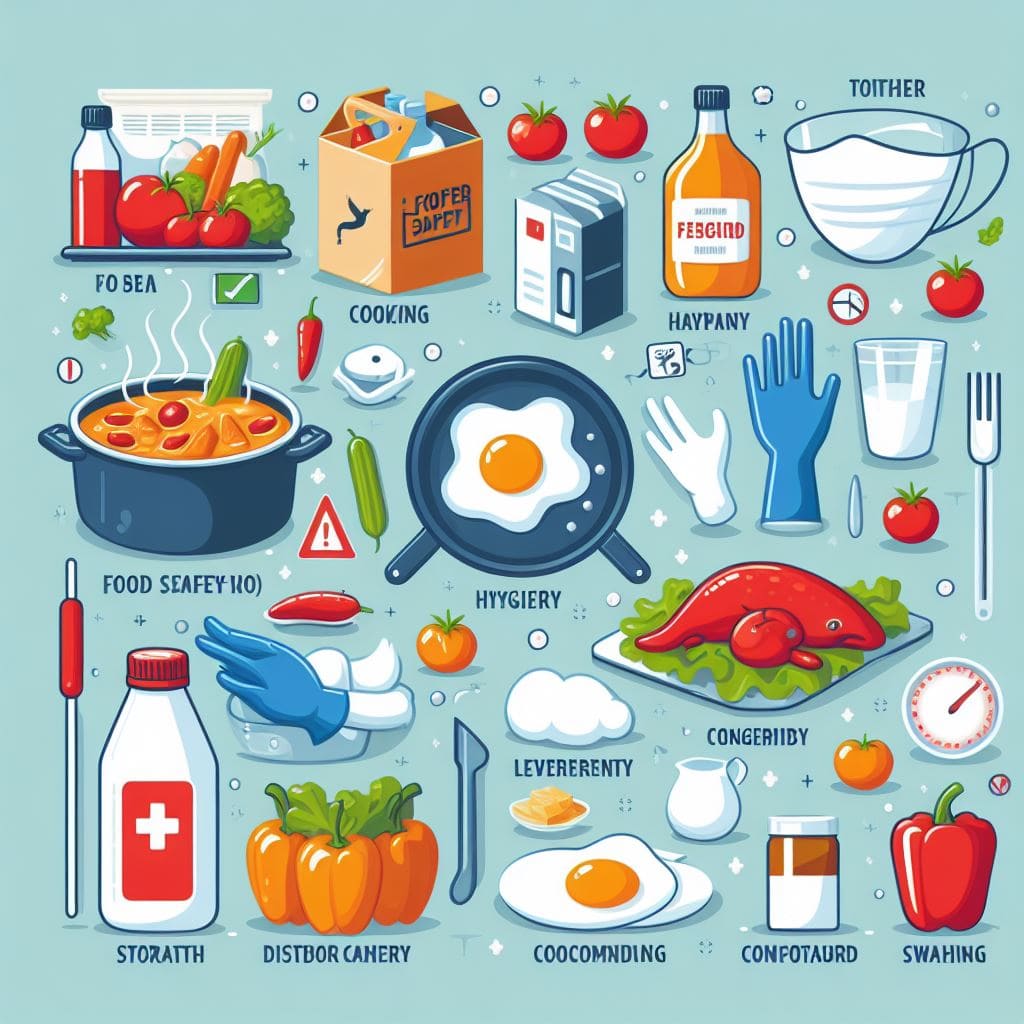
Introduction To Food Safety And Hygiene
Food safety and hygiene are crucial in preventing illnesses. Eating should nourish the body, not put it at risk. Understanding how to store, wash, and cook food properly helps ensure meals remain enjoyable and safe.
Understanding Foodborne Illnesses
Foodborne illnesses are infections or irritations. They occur through consumption of contaminated foods. Pathogens, including bacteria, viruses, and parasites, are common culprits.
- Unwashed produce may harbor pathogens.
- Improperly stored meats can encourage bacterial growth.
- Cross-contamination poses a significant risk during food preparation.
The Importance Of Food Safety
Adhering to food safety principles is essential. It minimizes the risk of foodborne illnesses. Every year, millions get sick from contaminated food. Preventative measures can drastically reduce these instances.
Kitchen hygiene, correct food handling practices, and awareness of temperature control are key areas to address.
Overview Of Storage, Washing, And Cooking In Food Hygiene
Storing, washing, and cooking are fundamental to food hygiene. This overview provides you with tips to avoid common mistakes.
| Aspect | Recommendations |
|---|---|
| Storage | Keep foods at correct temperatures. Avoid cross-contamination by separating raw and cooked foods. |
| Washing | Use clean water to wash fresh produce. Hands should be washed thoroughly before food handling. |
| Cooking | Meat must reach a safe internal temperature to kill pathogens. Use a thermometer to check for proper temperatures. |
Best Practices For Food Storage
Keeping food safe means storing it the right way. Food stays fresh and tasty when handled properly. Let’s explore the top methods to store our groceries.
Correct Refrigeration Techniques
Knowing how to chill food keeps it safe and extends its life.
- Set your fridge below 40°F (4°C).
- Store perishables inside, not in the door.
- Keep raw meat on the bottom shelf to prevent drips.
Debunking Common Food Storage Myths
Misconceptions can lead to food waste and safety issues.
| Myth | Truth |
|---|---|
| Honey never spoils | Honey can last long, but it needs airtight storage. |
| Eggs must be in the fridge door | They actually last longer on a shelf inside the fridge. |
Storing Dry Goods, Dairy, And Produce
Different foods need different care.
- Dry goods: Cool, dark places in airtight containers.
- Dairy: Keep milk and cheese cold, not in the fridge door.
- Produce: Some fruits and veggies prefer room temperature.
Freezer Management: Frosting And Defrosting
Good freezer habits stop freezer burn and keep food safe.
Wrap items tightly and label with dates. Defrost safely in the fridge, cold water, or microwave.
Thorough Washing Techniques For Different Foods
Clean food is safe food. The journey from farm to plate is filled with potential contaminants. Proper washing techniques for various food items ensure that what reaches your table not only tastes good but is also free of unwanted bacteria and chemicals. Let’s dive into the best practices for washing different foods.
Vegetables And Fruits: Techniques And Precautions
Fresh produce requires careful handling. Scrubbing vegetables and fruits under running water removes dirt, germs, and some pesticides. Use a clean brush for firm produce like melons or cucumbers. For soft fruits, like berries, soak them in water for a few minutes, then gently rinse. Always dry with a clean cloth or paper towel to further reduce bacteria.
Meats And Seafood: Cross-contamination Risks
Contrary to popular belief, washing meats and seafood can spread harmful bacteria. Prevent cross-contamination by using dedicated utensils and cutting boards. Cook these foods to the correct temperature to ensure safety.
The Role Of Washing In Eliminating Pesticides And Bacteria
Washing food reduces surface chemicals and harmful microbes. While peeling can remove residues, the nutrition-rich skins get lost. Soaking in saltwater or vinegar solutions for a few minutes can be effective for more thorough cleansing. Make sure to rinse under fresh water afterward.
Understanding When And How To Wash Organic Foods
Organic doesn’t mean contaminant-free. Organic foods also need washing to remove natural pesticides and microbes. Rinse them under cold running water, and use a vegetable brush for textured varieties like potatoes. Even when labeled ‘pre-washed’, a quick rinse is a good practice for added safety.
Cooking Temperatures And Food Safety
Understanding proper cooking temperatures ensures your food is safe to eat. Different foods need different heat levels to kill harmful bacteria. With the right temperature, you can enjoy tasty and healthy meals.
Safe Cooking Temperatures For Different Types Of Foods
Each food type has a safe temperature to reach:
- Beef, Pork, Veal, and Lamb (steaks, roasts, and chops): should be cooked to 145°F with a 3-minute rest time.
- Ground Meats (beef, pork, veal, lamb): need to reach 160°F.
- Poultry (whole or ground chicken, turkey): should hit 165°F.
- Fish: must be cooked to 145°F.
- Eggs: should be cooked until the yolk and white are firm.
Using Food Thermometers Accurately
For precise cooking, use a food thermometer:
- Insert the thermometer into the thickest part of the food.
- Avoid touching bone, fat, or gristle.
- Wait until the thermometer reads a steady temperature.
The Relationship Between Cooking Time And Temperature
The right combination of time and temperature cooks food safely. High temperatures for a shorter time can kill bacteria, just like lower temperatures for a longer time.
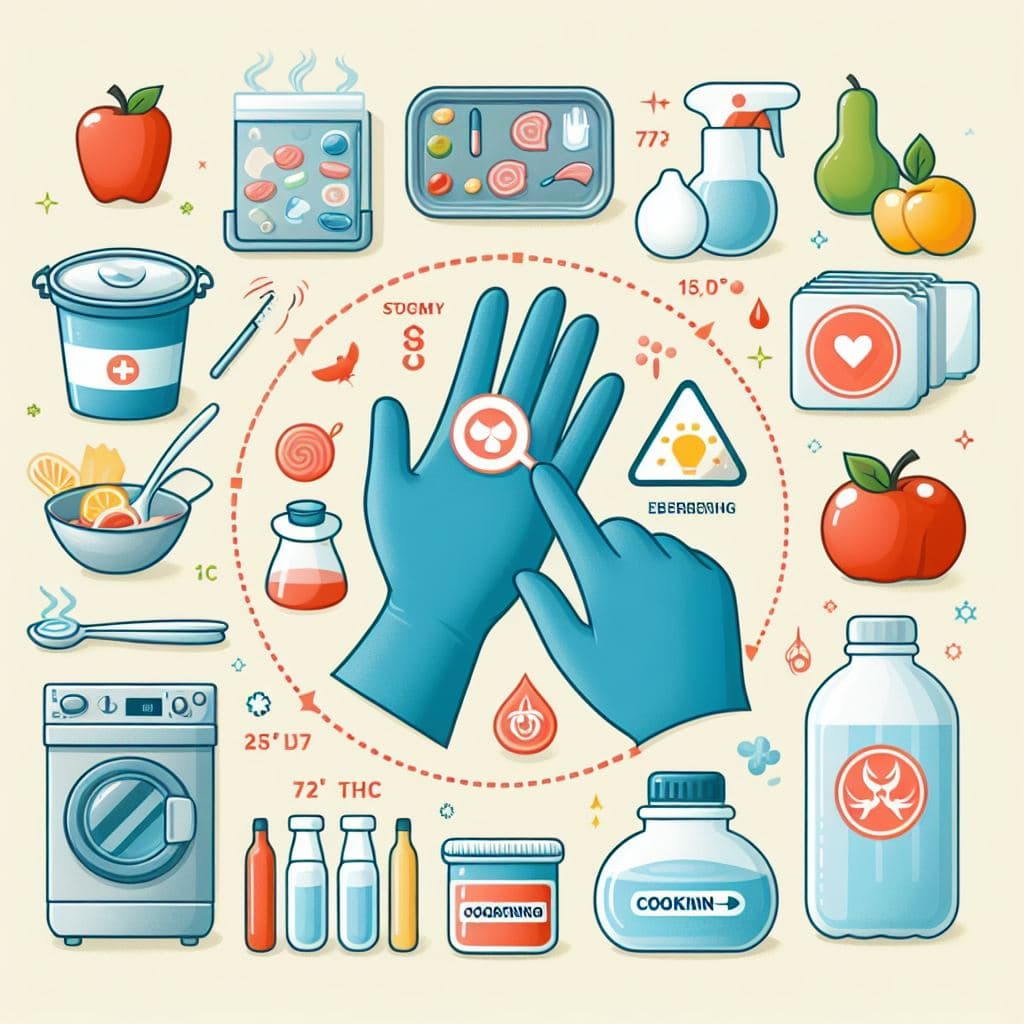
Resting Time After Cooking: Its Importance In Food Safety
Allowing meat to rest after cooking is essential:
- It lets the temperature rise slightly, killing any remaining bacteria.
- Resting times can improve flavor and juiciness.
Special Considerations In Food Safety
When it comes to keeping food safe, there’s more to consider than just the basics. Some groups of people need extra care, and certain foods require special attention. Whether dealing with high-risk groups, allergens, or the balance of nutrition and safety, understanding these key aspects ensures everyone enjoys their meals without any unwelcome surprises.
Food Safety For High-risk Groups
High-risk individuals like the elderly, pregnant women, young children, and those with weakened immune systems require added effort for food safety. Below are critical tips for safeguarding their health:
- Keep foods at safe temperatures, both during storage and after cooking.
- Avoid raw or undercooked meats, and unpasteurized dairy to prevent illness.
- Wash hands thoroughly before meal preparation and eating.
Handling Allergens And Cross-contamination
Cross-contamination of allergens can be as dangerous as foodborne pathogens. Keep these strategies in mind:
- Label food items properly to identify potential allergens.
- Use separate equipment and areas when preparing allergenic foods.
- Clean surfaces rigorously to eliminate allergen residues.
Balancing Nutritional Value And Food Safety
It’s essential to balance the benefits of nutrient-rich foods with the need to prepare them safely. Here’s how:
- Choose fresh produce and wash it under running water.
- Cook at optimal temperatures to maintain nutrients while killing harmful bacteria.
- Store accurately, using the proper temperatures to retain nutritional quality.
Regulations And Standards For Food Safety
Food safety and hygiene are vital for preventing foodborne illnesses.
By understanding the rules that keep food safe, we can protect ourselves.
Let’s dive into the key regulations and standards that guide food safety practices.
Understanding Fda Guidelines
The FDA sets guidelines to make sure food is safe in the United States.
- Labels: They tell us what’s in our food.
- Recalls: They remove unsafe food from stores.
- Inspections: They check if food companies follow the rules.
Usda Regulations
The USDA makes sure meat, poultry, and eggs are safe.
This department inspects and grades food, so we know it’s good to eat.
Haccp: Hazard Analysis And Critical Control Points
HACCP is a system that finds and stops hazards in food production.
- Analyze hazards: Spot what could go wrong.
- Identify critical points: Find where we must be extra careful.
- Set limits: Decide on the safe levels.
- Watch things closely: Ensure everything stays safe.
- Fix problems: Make it right if something goes wrong.
- Keep records: Write down what happens.
- Verify the system: Check that everything works as it should.
International Food Safety Standards
Around the world, food safety standards keep us safe.
- Codex Alimentarius: This code helps make food safe everywhere.
- ISO 22000: It’s a food safety management standard.
- Global Food Safety Initiative (GFSI): It approves different food safety standards.
Concluding Remarks: Implementing Food Safety And Hygiene
Ensuring the safety and hygiene of our food is not just a recommendation;
it’s a requirement for a healthy life. Whether you’re a professional chef
or a home cook, implementing the practices outlined in this article can lead to safer cooking
environments and healthier meals.
Key Takeaways From The Article
- Proper storage prevents cross-contamination.
- Thorough washing of ingredients removes harmful bacteria.
- Correct cooking temperatures kill pathogens.
The Continuous Evolvement Of Food Safety Practices
Food safety guidelines are always developing. Staying informed about the latest
protocols ensures you’re cooking safely. Keep an eye on updates from trusted authorities
like the FDA or USDA.
Encouraging Personal Responsibility And Awareness
Everyone plays a role in food safety. Make it a habit to practice these guidelines
and encourage others to do the same. Personal responsibility makes the kitchen a safer place
for everyone.
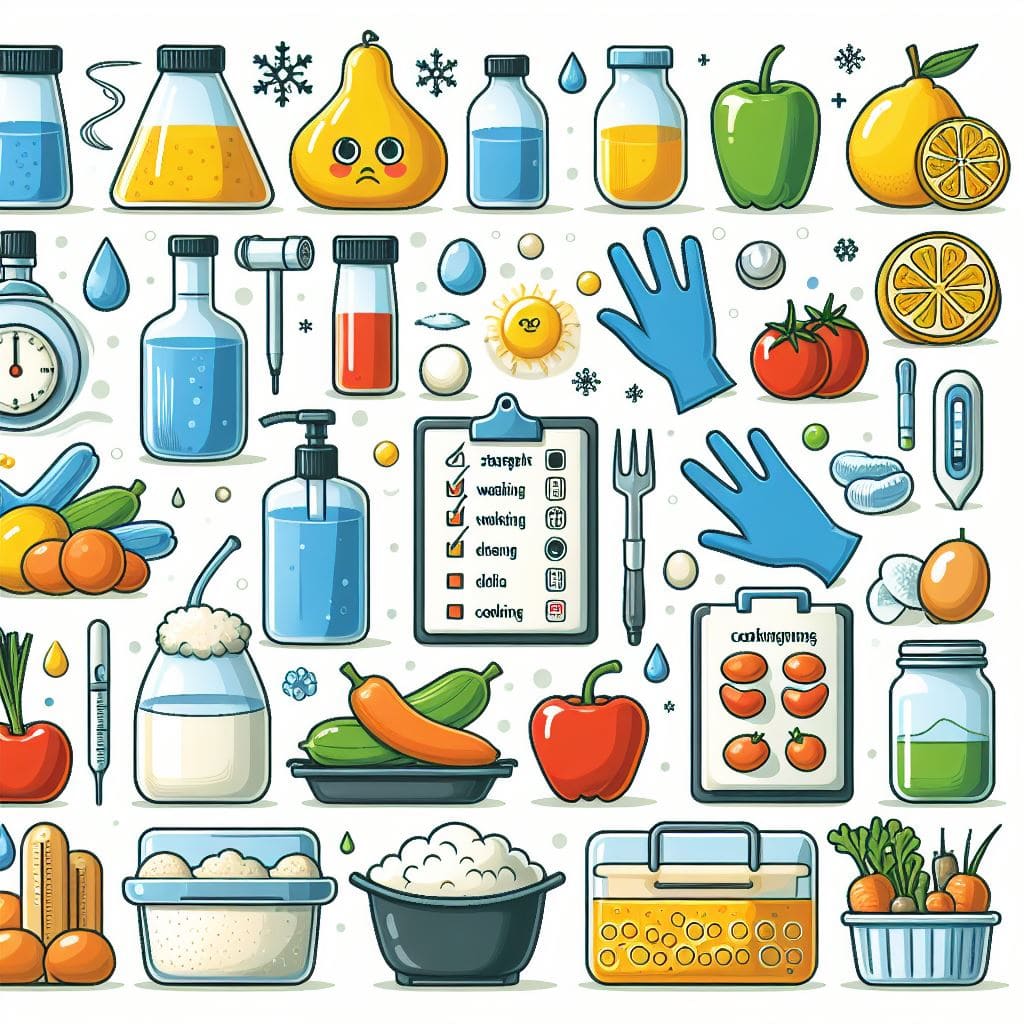
Conclusion
Ensuring food safety and hygiene is paramount for health. Proper storage, diligent washing, and precise cooking temperatures are core practices. By implementing these steps, you reduce the risk of foodborne illnesses, and maintain nutrient integrity. Remember, safe food handling is not just best practice—it’s a responsibility.
Stay informed, stay healthy.
Frequently Asked Questions On Food Safety And Hygiene: Storage, Washing, Cooking Temperatures
What Are Food Safety Temperatures For Storage?
Maintain cold foods at 40°F (4°C) or below. Store hot foods at 140°F (60°C) or above. Refrigerate perishables within two hours. Keep the freezer at 0°F (-18°C) for proper food storage. Regularly monitor temperatures with a thermometer for safety.
What Is The Food Safety Temperature For Cooking?
Cooking food safely requires reaching a minimum internal temperature. Poultry should reach 165°F, ground meats 160°F, and steaks/roasts 145°F. Use a food thermometer to ensure accuracy. Always let meats rest for 3 minutes after cooking.
What Are The 5 Guidelines For Food Storage?
Store perishables in the fridge at or below 40°F (4°C). Keep dry goods in a cool, dark place. Separate raw and cooked foods to prevent cross-contamination. Label and date food containers. Use the first-in, first-out (FIFO) method to manage inventory.
What Is The 4 40 140 Rule?
The 4-40-140 rule is a social media guideline suggesting posts should be under 4 minutes to read, videos under 40 seconds, and tweets under 140 characters for optimal engagement.

